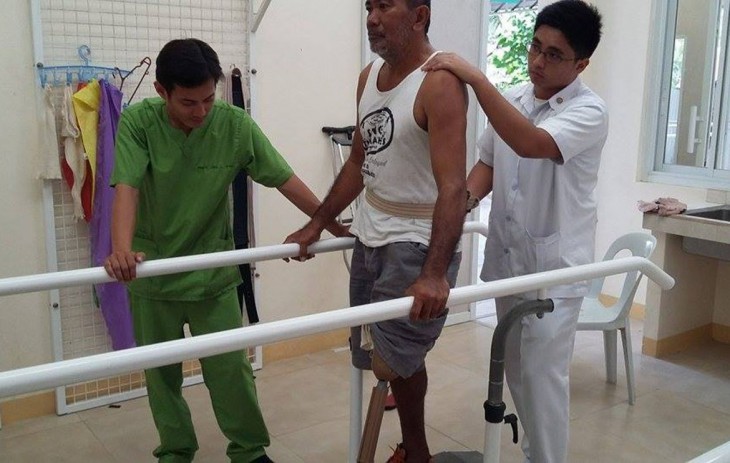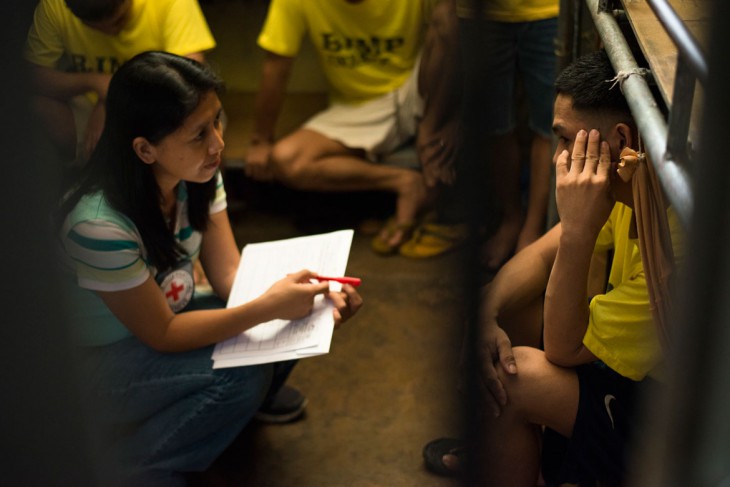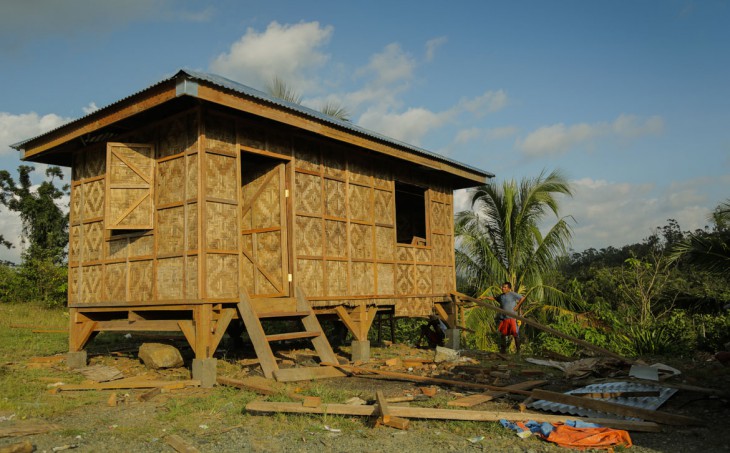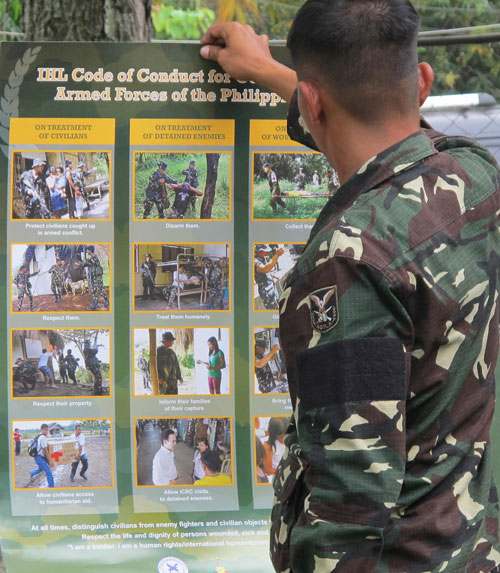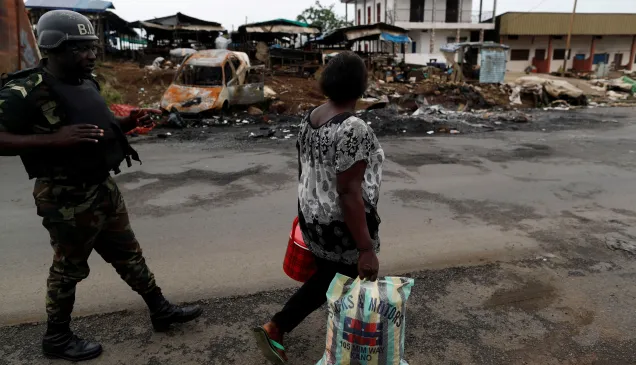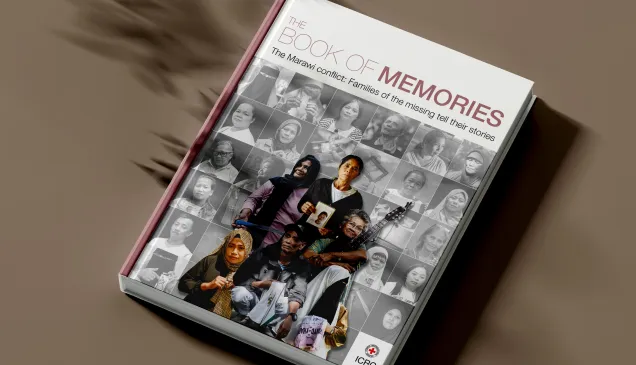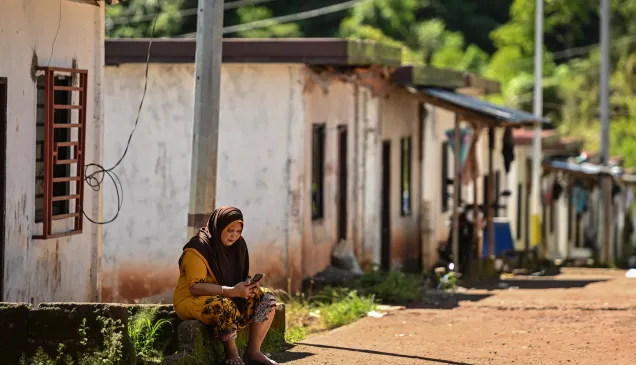ICRC activities in the Philippines in 2014
In 2014, the International Committee of the Red Cross (ICRC) continued working to protect and assist people affected by decades of non-international armed conflict and other situations of violence. It also coordinated with authorities to prioritize the welfare of detainees and promote awareness of and respect for international humanitarian law (IHL) among various stakeholders.
Many communities already beleaguered by cycles of armed conflict further suffered the effects of successive natural disasters in 2013. Despite the immediate outpouring of aid, these communities needed continued support to be able to rebuild their lives. The ICRC, which had provided life-saving assistance in these situations, also sustained its response to cover the remaining needs of the people affected. Together with the Philippine Red Cross (PRC), the ICRC implemented programs to help survivors recover their livelihoods, rebuild their houses and regain stable access to clean water and health care.
Armed conflict and violence
Conflict and armed violence continued to affect certain parts of the Philippines, particularly in Mindanao, where improvised explosive devices and armed clashes caused deaths, injuries or displacement. Often these areas, also afflicted by poverty, were difficult to reach and had minimal or irregular access to basic services.
In 2014, the ICRC completed several projects to support livelihoods and improve access to clean water in these communities. Key hospitals and community health facilities enhanced their capacity to provide timely and adequate care to the weapon-wounded, thanks to continued support from the ICRC and local health authorities.
- 360 weapon-wounded patients were treated in ICRC-supported hospitals
- 154 additional patients received individual support for their treatment across Mindanao
- 534 disabled people obtained physical rehabilitation services – enabling some to walk again – at the ICRC-supported Davao Jubilee Foundation
- 4,000 people in rural communities of Negros Occidental and Surigao del Sur gained regular access to clean water via two new water-supply systems built with their involvement
- Over 38,000 people in Mindanao and the Visayas restored or reinforced their livelihoods, aided by veterinary support, seed, tools and equipment
- Over 14,000 people used cash grants to improve or launch their own income-generating activities, such as vegetable gardening
- Almost 5,000 people augmented their household income through cash-for-work projects in Guihulngan, Negros Oriental, and Loreto, Agusan del Sur
Zamboanga conflict response
The humanitarian needs in Zamboanga City lingered long after the hostilities ended in September 2013, as hundreds of families struggled with prolonged displacement in evacuation centres and transition sites. In response, the ICRC continued to assist them by improving their access to water, sanitation and hygiene, addressing the nutritional needs of the most vulnerable groups, and providing opportunities to earn short-term income through cash-for-work activities.
- Over 12,000 people in 5 evacuation centers had a steady supply of potable water trucked in by the PRC/ICRC
- Displaced people in 2 transition sites, and the host community, benefited from increased water supply, through projects coordinated with the Zamboanga City Water District
- The construction of 102 latrines, enhancements to drainage systems, and hygiene-promotion sessions improved sanitation conditions and curbed the spread of diseases in evacuation centres and transition sites
- 19,000 consultations done at the Philippine Red Cross-operated basic health-care unit inside the Joaquin Enriquez stadium, with support from the ICRC and the City Health Office (CHO)
- Almost 11,000 patients benefited from the repair of the Rio Hondo barangay health station and 2 new multipurpose halls (hosting health activities at the Tulungatung and Taluksangay sites), all of which received medical supplies and equipment
- The CHO also received similar support with 7 barangay health stations and the Zamboanga City Medical Center was provided with material support and medicines
- PRC/ICRC health staff supported CHO mobile teams in conducting weekly primary health-care activities in Mampang site (Masepla)
- Over 3,000 displaced families (almost 16,000 people) eased their living conditions with received essential household and hygiene items
- Around 2,800 vulnerable families (almost 14,000 people) received food packages as a preventive measure to reduce the risk of malnourishment
- 571 moderately malnourished children under five years old and pregnant or lactating women improved their nutrition through a supplemental feeding programme; out of them, 289 received additional food packages
- Almost 40,000 displaced persons improved their food consumption, started small businesses or rebuilt their homes using unconditional cash grants
- Over 6,400 heads of households (nearly 35,000 people) earned short-term income through cash-for-work activities, such as garbage disposal, which also benefited the displaced population
Detention
2014 was an intensive year for the ICRC's vast work with Philippine authorities to improve detainees' living conditions, through mechanisms aimed at reducing prison overcrowding, improving health information systems and the management of tuberculosis (TB), and enhancing essential services and infrastructure in places of detention.
Repeated visits were also conducted by the ICRC to people detained in relation to armed conflict and other situations of violence in order to assess their treatment and living conditions and to ensure that internationally recognized detention standards were respected. Detainees were able to maintain links with loved ones through family visits facilitated by the PRC and the ICRC.
- 321 visits to 70,701 detainees, of whom 928 were visited and monitored individually
- 1,273 pending cases were submitted to different courts by the ICRC-supported Task Force Katarungan at Kalayaan (Justice and Freedom), comprising several government agencies led by the Supreme Court, leading to the release or sentencing of more than 350 detainees
- 400 Bureau of Jail Management and Penology (BJMP) paralegals participated in workshops to ensure that inmates receive ample support concerning the status of their cases
- 10,000 inmates in 7 Metro Manila jails were given health cards to strengthen the health information systems, through cooperation with the BJMP and Department of Health
- Support offered to the New Bilibid Prison and Quezon City Jail with mobile digital X-ray machines for TB screening, and rehabilitated their TB treatment working stations, laboratories and isolation facilities
- Almost 15,500 inmates were screened for TB in these two detention facilities
- Over 690 inmates with TB, including 99 with drug-resistant TB, were diagnosed with the disease and provided proper care
- Around 30,000 inmates in the two detention facilities benefited from TB advocacy, communication and social mobilization
- 50,000 inmates improved their access to health care through mobilization of detaining and health authorities, while 30 detention places received health-monitoring visits
- 136 increased bed capacity for the infirmary of the Davao Penal Colony
- 3,000 inmates in 11 jails saw improvements in their living conditions following the renovation of water/sanitation systems, outdoor areas and other facilities
- Over 12,000 inmates in 16 facilities were given hygiene and/or recreational items
Typhoon Haiyan response
Although the path to recovery was predictably long and arduous in communities in Central Philippines that suffered utter devastation from Typhoon Haiyan (local name: Yolanda) in November 2013, many survivors successfully transitioned from reliance on relief to self-sufficiency.
The International Red Cross and Red Crescent Movement delivered aid to the most affected communities in Cebu, Leyte, Palawan, Panay and Samar. The ICRC, together with the National Society, focused its response on Samar island – also partly affected by armed violence – where it had been supporting communities for years.
- Survivors restored contact with relatives via Red Cross messages, phone calls and the ICRC's family links website (familylinks.icrc.org)
- 4,461 families in eight municipalities were given new storm-resilient houses built with the help of community members, including more than 1,000 carpenters who received training on good construction principles
- Over 72,500 individuals benefited from consultations, surgeries and deliveries in field hospitals, basic health-care units and mobile clinics set up in Basey and Balangiga during the emergency response
- 79 health facilities received medical supplies/equipment
- 2 district hospitals, 6 rural health units, and 7 barangay health centers were rehabilitated and around 2,600 children under five years old received various vaccines
- 500 people were given mental-health/psychosocial support
- 75,000 people – including 33,000 people in Guiuan – regained access to water through rehabilitated water-supply systems and the installation of hand pumps and slow sand filters
- Almost 236,500 people sustained themselves through distributions of food rations or food-for-work projects
- Over 227,000 of them started vegetable gardens using ICRC-donated seed
- Almost 226,000 people received essential household and hygiene items
- Around 147,500 people received unconditional cash grants to cover basic expenditures
- Over 10,000 breadwinners supported their families (more than 54,000 people) with wages they earned in exchange for clearing debris or participating in shelter-construction projects
- Over 71,000 people received cash grants with which they pursued fishing, agricultural, livestock and other business ventures
Humanitarian law
Activities to promote awareness of IHL, or the law of armed conflict, continued in 2014 for various stakeholders – from weapon bearers to members of the judiciary to members of the academic community.
In the field, the ICRC conducted IHL dissemination sessions and meetings with armed groups, influential circles and communities affected by armed conflict, to help enhance respect for the law and ensure that civilians were protected.
- 1,455 members of the military and police increased their understanding of IHL and/or human rights laws applicable to their duties
- 300 members of armed groups, influential religious leaders and scholars enhanced their awareness of IHL
- 14 law schools participated in the annual moot court competition on IHL, organized with the PRC and the Court of Appeals
- 28 political science professors in Mindanao were trained on IHL
Working with the National Society
The ICRC continued working closely with its main operational partner in the country, the Philippine Red Cross (PRC), while supporting its capacity to respond to emergencies, including natural or man-made disasters.
In 2014, the ICRC helped build the capacity of 24 PRC chapters prone to man-made or natural calamities, by training their Red Cross Action Teams and providing them with equipment and supplies.
The ICRC also supported the deployment of volunteers in ICRC-PRC emergency operations.


